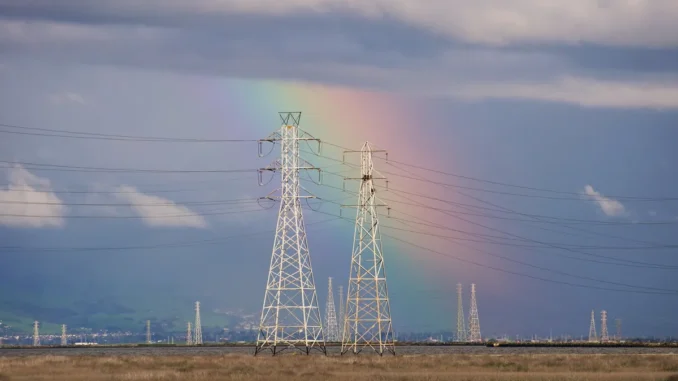
Karen Onaran is president and CEO of the Electricity Consumers Resource Council.
After decades of decline in the U.S., manufacturing is poised to make a resurgence. Bolstered by new technologies, private investment and government incentives, the industrial sector is projected to increase anywhere from 1.5% to 3% annually over the next five years.
This projected manufacturing growth is one of the key drivers of increasing electricity demand. Peak demand for electricity is projected to grow by 38 GW over the next five years and coupled with a significant shift in the energy mix, the recurring refrain is – the grid is not ready.
Recognizing these challenges, the Federal Energy Regulatory Commission is considering significant transmission planning and cost allocation reforms. With transmission projects taking upwards of a decade, we need to start building transmission now. As large industrial consumers who need access to increasing amounts of affordable and reliable energy supply while also paying the costs of that supply and delivery, we encourage FERC and all stakeholders to implement the following reforms and best practices that facilitate well-planned transmission solutions.
Cooperative, forward-looking planning
Incremental transmission development over the last century has resulted in an inefficient, balkanized electric grid where planners and utilities have traditionally focused on immediate local needs. However, our national economy and modern way of life have become highly dependent on electricity, necessitating a broader look at energy needs. Emerging challenges of increased demand with variable energy supply and volatile weather conditions require a coordinated, holistic, and forward-looking approach. We can no longer plan transmission based solely on reliability violations and local congestion costs. We must plan future generation and transmission together with an understanding of the changing energy landscape.
FERC, states, planners and developers must collaborate on possible future scenarios and develop the best, least-cost solutions. However, the current transmission planning foundation has had the opposite effect in many cases. The federal/state jurisdictional line continues to blur with lawmakers and regulators wary of ceding control over the process. Utilities and merchant developers further entrench their beliefs that the “other” should not be building transmission. Transmission planners have become arbiters in complicated and adversarial transmission planning cycles reducing opportunities for collaboration so as not to be seen as favoring one developer over another.
We cannot plan for the future entrenched in our individual camps. We must view the grid as an integrated and interconnected machine that underpins our economy and daily lives. Consumers benefit from a well-planned grid that anticipates future growth and takes advantage of its interconnectedness to boost reliability and provide access to least cost generation.
Balancing transmission costs and least cost generation
While transmission expansion is necessary to meet our growing demand, it does not suggest unfettered or uneconomic transmission build. We must minimize both generation and transmission costs. Transmission should be developed in areas with robust generation resources that reduce costs to consumers AND where those savings exceed the transmission costs to access it. Planners should recognize the significant economies of scale in transmission — it generally costs less in dollars per megawatt hour to deliver energy at higher voltage and capacity levels — an economic opportunity that is lost if we continue to act only incrementally and reactively in response to specific service requests.
We must also consider optimizing our existing infrastructure to its full potential. Not all transmission solutions include new wires. Grid enhancing technologies that accurately reflect available capacity and direct energy on the path of least congestion can save consumers from costly transmission investment.
The costs of reliability must be a factor when determining generation and transmission costs. Prolonged outages can cost manufacturers millions in lost revenue, but even momentary interruptions have safety and emissions impacts as well as cost. Interconnecting regions can bolster reliability and reduce costs in both regions by accessing additional generation resources, reducing reserve margins and providing affordable backup supplies in times of higher locational marginal prices or extreme outages.
Separately, we cannot reinforce tribalism by refusing to consider any transmission perceived as supporting another state’s public policy goals as having zero benefit to captive ratepayers. While there is some risk to free ridership from high-voltage, multi-state transmission lines, we should not foreclose consideration of interregional transmission as a potential solution.
Cost management and assigning costs to those that benefit
A crucial component of a well-planned transmission system is assigning the costs of operations and development to those customers that ultimately benefit. This is arguably one of the more controversial components of transmission planning that has delayed needed transmission. While there is little argument against the “beneficiary pays” doctrine, determining what those benefits are and who ultimately receives those benefits is less clear.
Establishing a core set of measurable benefits would help transmission planners and regulators identify beneficiaries and assign costs. In its proposed transmission rule, FERC outlined several metrics for determining benefits including production cost savings, reduced energy losses, deferred generation investment and increased market liquidity. We strongly recommend that FERC, in coordination with states, define a minimum set of benefits reflecting these economic and reliability benefits when weighing transmission solutions to provide confidence and clarity in project benefits and those responsible for the costs.
At the same time, those beneficiaries should not be saddled with unreasonable costs. Although cost estimates are considered when planning transmission, there is little scrutiny of actual development costs or subsequent deviations to the cost/benefit analysis. Even projects selected in a competitive solicitation with identified cost caps need to provide transparency into cost escalations and be held to their cost containment commitments. We support periodic reports between the time a project is approved and construction begins identifying any significant deviations in the cost/benefit analysis to determine whether a project is still needed or whether cost escalations can be mitigated. Consumers must have confidence in the transmission development they ultimately pay for.
As large manufacturers invest in the nation’s economy, we encourage FERC and all stakeholders to implement these recommended practices to ensure a robust and reliable grid of the future.
Take the Survey at https://survey.energynewsbeat.com/
ENB Top News
ENB
Energy Dashboard
ENB Podcast
ENB Substack



